Best Perennial Pollinator Plants
Attract nature's garden-friendly critters to your backyard oasis. You may love those hummingbirds, butterflies, and bees for the buzz of activity and burst of color they add to your yard. Not only are they fun to watch, but these pollinators also do a lot of good for your cucumbers and tomatoes. Attracting pollinators to your garden is easy when you know the right plants to choose. Here are the plants that will help pollinator peeps and your garden thrive:
MEXICAN HAT (Ratibida columnifera) Bi-colored petals in bright yellow and maroon radiate out to form the "rim" of the sombrero of this small and playful wildflower. Planted in full sun and once established, this amigo will thrive in even the most inhospitable terrains.
CONEFLOWER (Echinacea) The Purple Coneflower, known simply as Echinacea in herbal circles, is one of the most recognizable North American Native Wildflowers. Large, bold blooms dot the tops of tall, sturdy stems, providing a safe landing pad for butterflies and other pollinators to spend a moment. An exquisite perennial, this wildflower is also prized for its healing herbal qualities as well.
ROYAL CARPET (Alyssum) Summer gardens are simply incomplete without Sweet Alyssum blooming, and this dwarf purple variety is no exception. Royal Carpet Sweet Alyssum grows no taller than 4-6 inches high and is the perfect ground cover, container flower, or rock garden addition. Its sweet scent also attracts beneficial insects to the garden, which is always welcome!
GAYFEATHER (Liatris) Commonly known as "Liatris" in floral design, Gayfeather grows tall spikes covered in small, fuzzy purple flowers. Their slender, erect nature makes them ideal for vases and Ikebana Japanese flower arranging. A wonderful pollinator attractor, Gayfeather or Blazing Star, will bloom midseason through summer.
COREOPSIS (TICKSEED) Taller than its siblings but just as beautiful, plant this wildflower for height and its solid, striking magenta blooms. This low-maintenance annual produces daisy-like flowers in a wonderfully warm shade of deep red.
BEEBALM (Monarda) A brilliant addition to your late-summer herb garden and flower beds. Bees, butterflies, hummingbirds, and other nectar-seeking creatures covet the tubular flowers on the plant's rounded flower heads. The leaves and flowers can also be made into tea. It likes to be planted in full-sunshined locations in rich, well-drained soil. Known as Bee Balm or Wild Bergamot.
LUPINE (Lupinus) Also known as Garden Lupine, our Russel Lupine Mix is known for its tall, luscious blooms in an array of bright colors. It does best in sandy soils where lupines and long taproot can grow. Russel Lupine may take a year after planting to bloom. Enjoy these spectacular spikes for years to come!
RED YARROW (Achillea millefolium) Yarrow is a favorite amongst wild gardeners, and it's very easy to see why. It's incredibly adaptable and also attracts pollinators. This Red Yarrow has fragrant, tiny clustered red flowers with yellow centers. Bring some inside for a cut flower arrangement.
RED FOUR’O CLOCK (Mirabilis jalapa) Named because the flowers habitually open in the late afternoon, remaining open into the night, Four O Clock Red is sweetly scented and a favorite of gardeners and pollinators alike! Thought to be one of the easiest wildflowers to grow, plant your seeds in full sun though they can tolerate some light shade. Four O Clock Red will flourish in the heat of summer and bloom in the late season.
BUTTERFLY MILKWEED (Asclepias tuberosa) An essential butterfly garden plant, Butterfly Milkweed plants produce an abundance of bright orange blooms that attract a variety of butterflies. Unfussy and drought tolerant, Butterfly Milkweed will reach up to 24" high and does best in well-draining soil. It is an important food source for Monarch caterpillars. For best success with this perennial seed, we recommend Fall Planting. For spring planting, seeds should be cold stratified prior to sowing.
